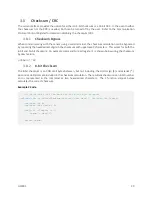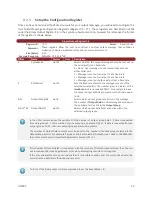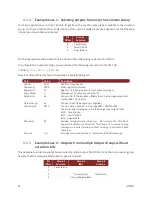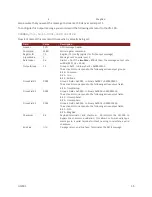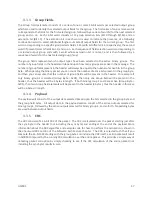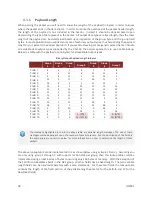
24
UM001
which minimizes the effect of gyro drift while maintaining a stable and accurate pitch and roll solution.
Since the Relative Heading mode assumes that other magnetic disturbances can be present which are
indistinguishable from the Earth's field, Relative Heading mode cannot always ensure that the calculated
heading is always referenced to Earth's magnetic north.
Use the Relative Heading mode for applications where the stability of the estimated heading is more
important than the long-term accuracy relative to true magnetic North. In general, the Relative Heading
mode provides better magnetic disturbance rejection that the Absolute Heading mode.
Relative Heading Mode Advantages
Capable of handling short-term and long-term magnetic interference.
Can handle significant errors in the hard/soft iron while still maintaining a stable heading and gyro
bias estimate.
Relative Heading Mode Disadvantages
Unable to maintain heading estimate relative to true North in environments with frequent long-
term magnetic field disturbances.
Indoor Heading Mode
The Indoor Heading mode was designed to meet the needs of applications that require the enhanced
magnetic disturbance rejection capability of the Relative Heading mode, yet desire to maintain an
absolute heading reference over long periods of time. The Indoor Heading mode extends upon the
capabilities of the Relative Heading mode by making certain assumptions as to the origin of the measured
magnetic fields consistent with typical indoor environments.
In any environment the measured magnetic field in 3D space is actually the combination of the Earth’s
magnetic field plus the contribution of other local magnetic fields created by nearby objects containing
ferromagnetic materials. For indoor environments this becomes problematic due to the potential close
proximity to objects such as metal desk and chairs, speakers, rebar in the concrete floor, and other items
which either distort or produce their own magnetic field. The strength of these local magnetic fields are
position dependent, and if the strength is on the same order of magnitude as that of the Earth’s magnetic
field, directly trusting the magnetic measurements to determine heading can lead to inaccurate heading
estimates.
While in Indoor Heading mode the VPE inspects the magnetic measurements over long periods of time,
performing several different tests on each measurement to quantify the likelihood that the measured
field is free of the influence of any position dependent local magnetic fields which would distort the
magnetic field direction. Using this probability the VPE then estimates the most likely direction of the
Earth’s magnetic field and uses this information to correct for the heading error while the device is in
motion.
Indoor Heading Mode Advantages
Capable of handling short-term and long-term magnetic interference
Can handle significant errors in the hard/soft iron while still maintaining a stable heading and
gyro bias estimate.
Capable of maintaining an accurate absolute heading over extended periods of time.




















